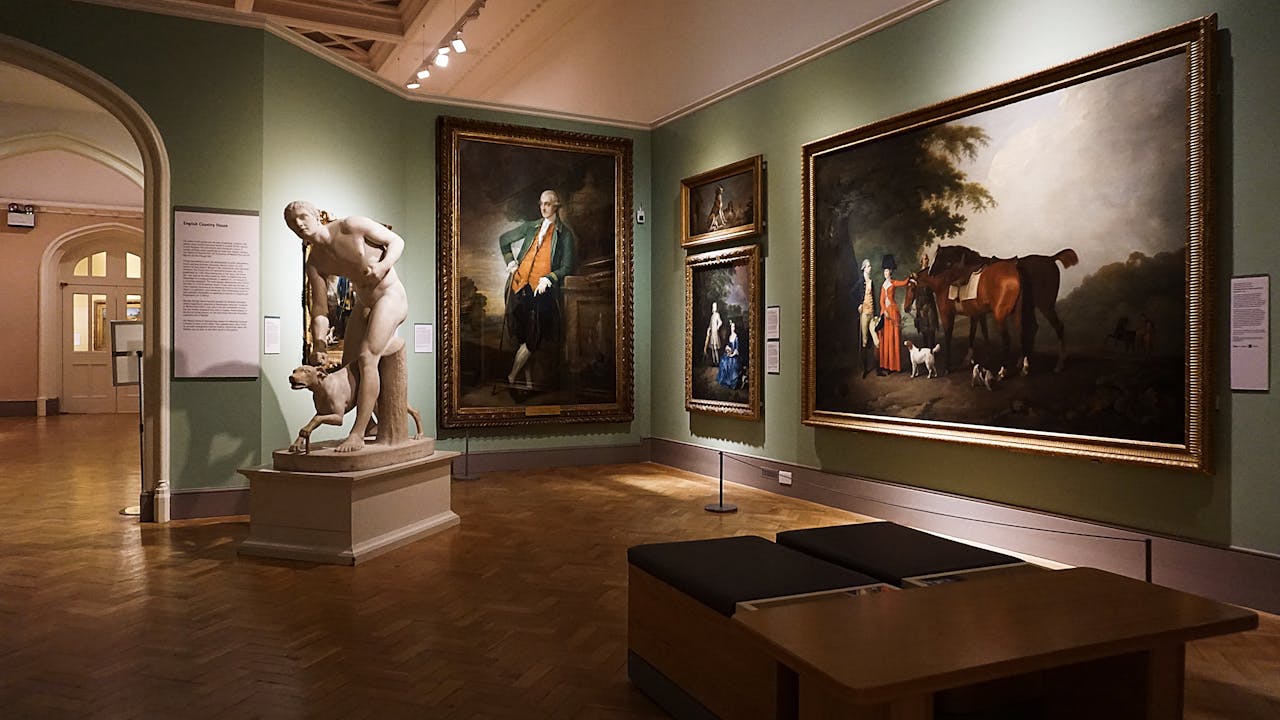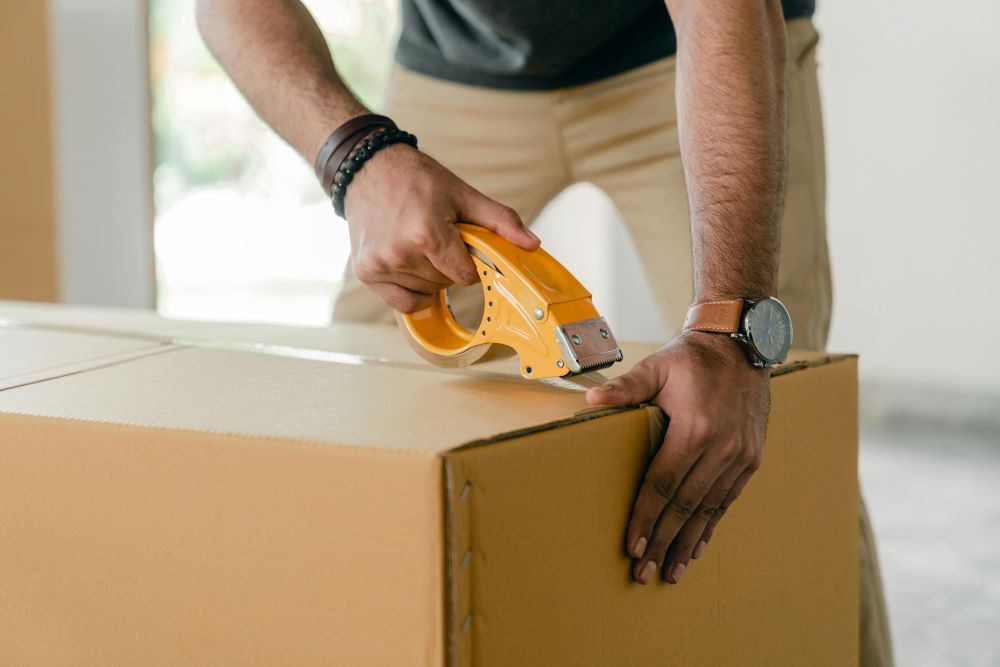
Fine Art Gallery Storage: Preserving Valuable Pieces During Commercial Gallery Relocations
Relocating an art gallery in Virginia requires detailed planning, particularly to preserve invaluable artworks. Implementing proper fine art gallery storage and exploring sustainable practices guarantees these treasures are protected from damage due to climate or handling errors. Utilizing effective, eco-friendly storage solutions is necessary during this sensitive transition period.
Consequently, art handlers must prioritize secure, climate-controlled environments to maintain art integrity. Hence, understanding the significance of these elements ensures the safety and preservation of valuable pieces during transitions. This introduction will explore key strategies and technologies that protect artworks as galleries move to new locations.
The Importance of Climate Control in Art Storage
When fine art collections in Virginia prepare for relocation, the emphasis on safeguarding these valuable pieces is paramount. Reliable storage solutions are critical in this process, and A2B Moving and Storage Virginia stands out as a trusted provider. They have served the community for more than 24 years and help over 2400 satisfied clients every year—this makes them a go-to option for your art collection. Safeguarding the integrity of artworks during the transition demands meticulous planning and applying expert techniques, and here are some of those priorities.
Climate Control
Maintaining a controlled environment is essential for preserving art. Changes in temperature and humidity can damage various craft forms, such as paintings, sculptures, and delicate installations. Effective climate control is crucial as it preserves artworks by keeping conditions stable, thus preventing deterioration. This approach is vital not only during storage but also through the entire relocation process. Ensuring consistent environmental conditions helps protect the integrity and value of pieces, making it a fundamental aspect of transportation and storage strategies.
Custom Crating
Custom crating is indispensable to safeguard artworks during transit. Tailor-made solutions involve using robust materials designed to shield pieces from shocks, vibrations, and environmental hazards. Each crate gets crafted to fit the specific dimensions and fragility of the artwork it holds, making sure that each piece remains secure from origin to destination.
Crating Solutions for Art Transport
Certifying the safety of artworks during transportation starts with selecting the right crating solutions. Galleries must choose crates that are robust and specifically designed to protect each piece when moving to a new location. For instance, these containers should ideally feature acid-free linings and customizable padding that conforms to the shape and size of the artwork.
Selecting the right custom crating and packing solutions preserves the physical condition of the artwork and maintains its historical and financial value. Gallery owners should work closely with experienced handlers to design and implement the most effective transport safeguards for their priceless collections.
Shock-Absorption
Vibration can seriously harm delicate items. Consequently, advanced crating designs now incorporate shock-absorbing materials. This innovation significantly minimizes impact damage when moving sensitive sculptures or paintings.
Wooden Crates
Fine art gallery storage requires special attention to detail. When transporting valuable art, standard shipping boxes simply will not suffice. Each crate must be a fortress, safeguarding its contents from temperature fluctuations, moisture, and unauthorized access. As such, gallery owners often opt for wooden crates with airtight seals.
Security Measures for High-Value Artworks in Transit
Securing high-value artworks during transit calls for stringent measures. Galleries in Northern Virginia should partner with long distance movers in the area, known for their expertise in art relocation. These professionals utilize GPS tracking to monitor the artworks’ whereabouts, providing constant oversight. Additionally, they may employ armed escorts to safeguard against theft.
Security Checks and Communication Channels
Implementing rigorous security checks at every transition point is key. This includes verifying identities and conducting thorough inspections of transport vehicles. Galleries must also select comprehensive insurance coverage tailored to the value and rarity of the artworks to protect against unforeseen damages.
Lastly, using encrypted communication channels between all parties keeps sensitive information secure and prevents potential security breaches. This level of vigilance preserves the art’s integrity and provides peace of mind throughout its relocation.
Handling and Installation Techniques Post-Move
Handling and shipping fine art necessitates precision and expertise. After the move to a new Virginia location, specialists in art handling carefully unpack and install pieces using rigorous techniques, such as the following:
- They first assess the new environment, adjusting humidity and light conditions to suit the artwork. This proactive approach protects valuable pieces from potential damage.
- Transitioning to the installation phase, the handlers employ tools and methods that meet the highest standards for safety and aesthetics.
- The team uses gloves to prevent oils from hands from tarnishing delicate surfaces.
- They also utilize soft straps and padding during movement to guard against physical impacts.
- The installation process includes precise positioning, confirming that each piece occupies its ideal space within the gallery’s design. This meticulous attention ensures the art remains secure and visually compelling in its new home.
This specialized care extends the lifespan of artworks and enhances their display, embodying the gallery’s commitment to preservation and presentation.
Technological Innovations in Storage and Transport
In recent years, notable advancements in fine art gallery storage and transport technology have emerged, enhancing the safety of delicate artworks. As we have already mentioned, shock-absorbent materials cushion pieces from vibrations and impacts during transit, while real-time condition monitoring systems keep a close watch on the environment inside transport containers. To provide complete protection, do your due diligence by properly examining any possible risks tied to moving.
These innovations drastically reduce the risk of damage, keeping artworks secure from point A to point B. Also, advanced climate control technologies maintain optimal conditions, guaranteeing constant temperature and humidity levels. These technologies represent a significant leap forward in the logistics of handling, offering peace of mind for collectors and galleries alike. Each development underscores the growing sophistication in protecting and transporting art in a modern setting.
Conclusion
The relocation of fine art requires meticulous planning and specialized care. Careful consideration of fine art gallery storage is crucial, as it ensures the preservation and safety of valuable pieces. Also, it’s important to adopt modern technologies that enhance the protection and tracking of artworks during transit. By consulting local logistics professionals, gallery owners can guarantee that their collections are handled with the expertise and attention they deserve. Thus, securing professional advice safeguards the art and fosters a smooth transition to its new home. This approach will undoubtedly benefit both the pieces and their appreciators.






Recent Comments